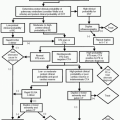Thoracic Aortic Injury
Jens Vogel-Claussen
Edward H. Herskovits
Acute thoracic aortic injury accounts for 10-20% of fatalities in high-speed deceleration accidents. Aortic rupture is highly lethal if untreated: there is a bimodal distribution of mortality, with more than 88% dying within 4 hours and 90% of undiagnosed survivors dying in the 4 months after presentation. Thoracic aortic injuries include aortic dissection, aortic intramural hematoma, traumatic aortic rupture, and aneurysm (see Chap. 21, “Thoracic Aortic Aneurysm and Dissection.”) The most frequent deceleration injury is at the aortic isthmus, near the ligamentum arteriosum and aortopulmonic window. Therefore, evaluating the mediastinum, particularly the aorta, great vessels, and mediastinal fat, is the radiologist’s central role in this setting.
Mechanism of Injury.
The most common mechanism of injury is a high-speed motor vehicle accident, or one in which the victim is ejected from the vehicle; other settings include a pedestrian or cyclist struck by a motor vehicle, and fall from a height. Common to all of these mechanisms of injury is sudden deceleration in the anteroposterior (AP) or superoinferior axis, leading to traction on the aorta at the ligamentum arteriosum, and compression of the aorta between the thoracic spine posteriorly and the manubrium, first rib, and clavicle anteriorly. Mechanisms of dissection and intramural hematoma are discussed in Figures 22-1 and 22-2.
Symptoms and Signs.
Given these mechanisms of injury, it is not surprising that associated symptoms include back pain, subjective weakness or numbness in the extremities, and chest pain. Associated physical findings include fractures of the bony thorax, upper and lower extremity hypotension, return of frank blood from a pleural tube, shock, and extrathoracic injuries, including paresis or paraplegia. Significantly, signs of chest-wall injury are absent in one third of cases of traumatic aortic injury.
Indications.
Depending on the study quoted, the sensitivity of chest radiography for detecting aortic trauma is 80-85%, and the specificity is 45-62%. Although these numbers vary considerably with technique and other factors, they clearly confine the role of chest radiography to that of a screening technique to be incorporated with clinical information during rapid initial assessment of a trauma victim.
Protocol.
Standard upright posteroanterior (PA) chest radiographs are much preferable to supine AP radiographs, but may not be possible because of the patient’s condition.
Possible Findings
Although these findings lack specificity, when more than one of them is present further evaluation is almost always indicated.
Rightward displacement of a nasogastric tube.
Left apical cap.
Fractures of ribs 1-3.
Loss of the aortic knob outline.
Widened mediastinum, which is caused by injury and bleeding of mediastinal veins and serves as a marker of injury severity and is commonly associated with aortic dissection.
Wide paraspinal stripe.
Loss of descending aorta outline.
Thick paratracheal line.
Pneumothorax.
Hemothorax.
Pneumomediastinum.
Pulmonary contusion.
Stay updated, free articles. Join our Telegram channel

Full access? Get Clinical Tree



